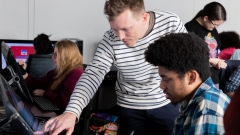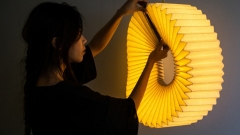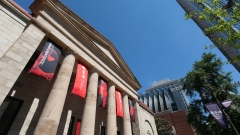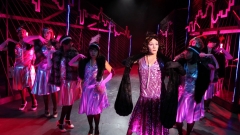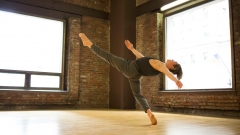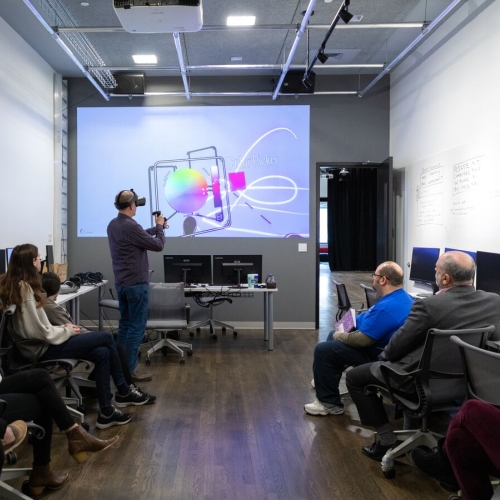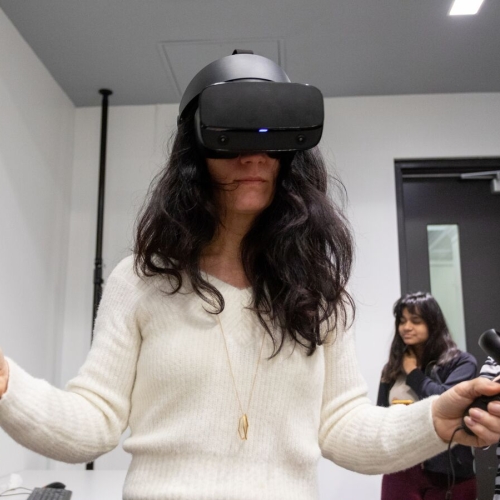VR Demo Held for School of Design Faculty in CIM Center
March 5, 2020
On Monday, Feb. 24, faculty from the School of Design visited the Center for Immersive Media (CIM) for a demonstration of the cutting-edge technology available to use in their classrooms. This demonstration was part of the School of Design’s initiative to have students utilize immersive media in their coursework in all its programs, from Illustration to Museum Studies.
CIM Director Alan Price gave a brief history of virtual reality (VR) technology, during which he explained that it only really started around 2013. Since then, VR headsets have improved exponentially each year. Price showed the faculty early VR headsets and compared them to the most recent technology from 2019—the Oculus Rift S and the Oculus Quest headsets, which are available in the center.
Price then gave a demonstration using two programs, Tilt Brush and Gravity Sketch, projecting what could be seen in the headset onto a full screen, so faculty could experience what the headset would show the user. These programs allow the user to use their hands to design 3-D shapes in a totally immersive experience.
School of Design Dean Mark Tocchet noted the importance of immersive media in students’ first year. All School of Design students will now be required to take a course in immersive media. “This is the next wave,” Tocchet said. “The earlier students feel comfortable with the technology, the better. I can only imagine what they’ll create as seniors.”
CIM currently offers course topics in emerging and immersive technologies, concepts, and applications. These courses often reflect contemporary trends; collaborative and cross-disciplinary approaches; and the creative research and practice of faculty, staff and visiting artists. Courses are open to all students in all disciplines.
CIM work-study student Cam Eyring ’20 (Game Art) told us how she became interested in VR, citing Game Art Program Director Erik Van Horn’s Artmaking in VR course as her introduction to the technology. Eyring explained that in the course students were asked to create “useless objects,” such as a bike with square wheels, to become comfortable creating objects using the VR programs. Eyring hopes to use the technology in her senior thesis.
In addition to VR technology, Price said that students are working with motion-capture technology in the center and that they will have the opportunity to take a course in motion capture in the future. Students will be able to use these techniques in fields such as animation to provide lifelike movements to their projects.

